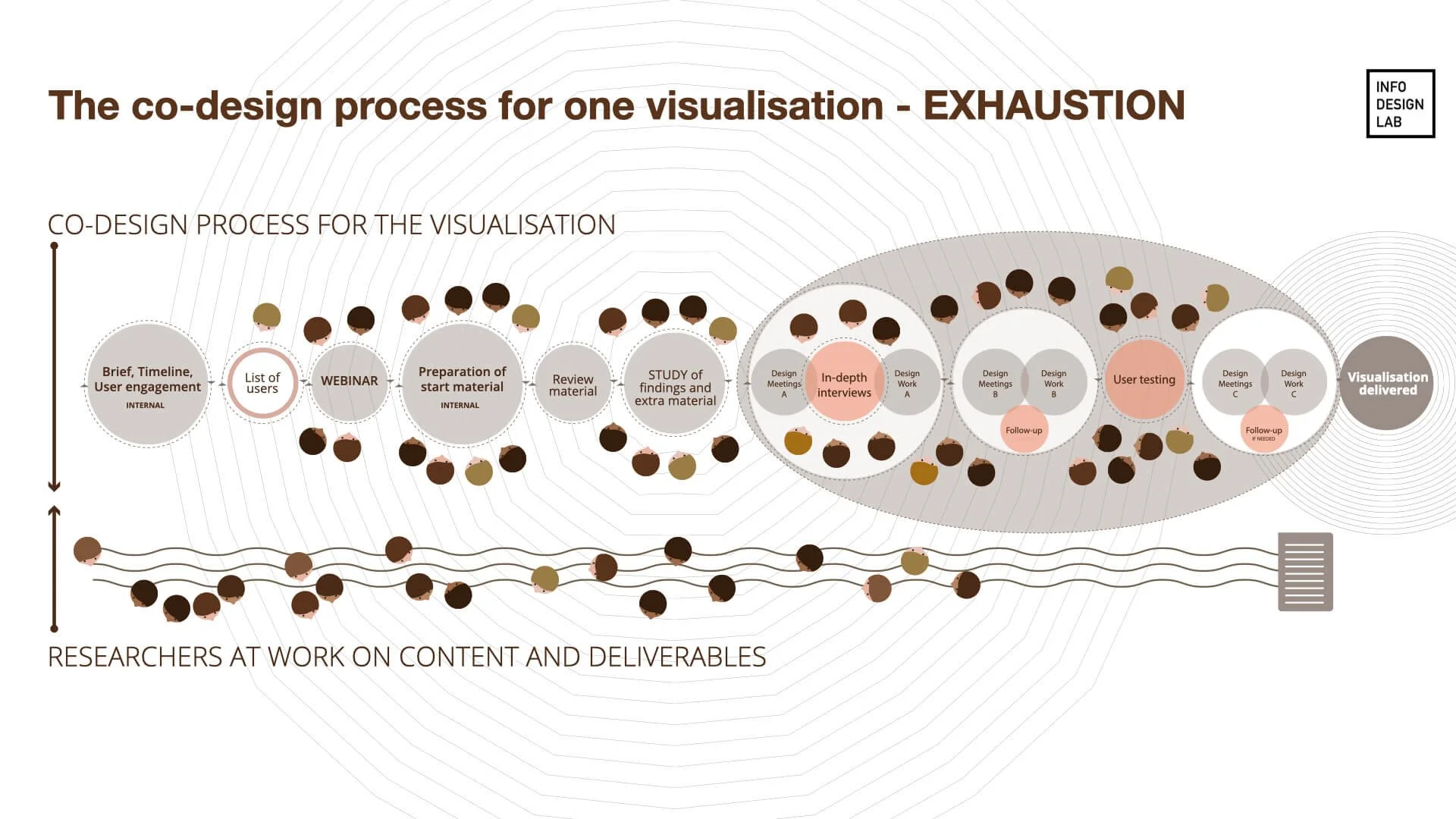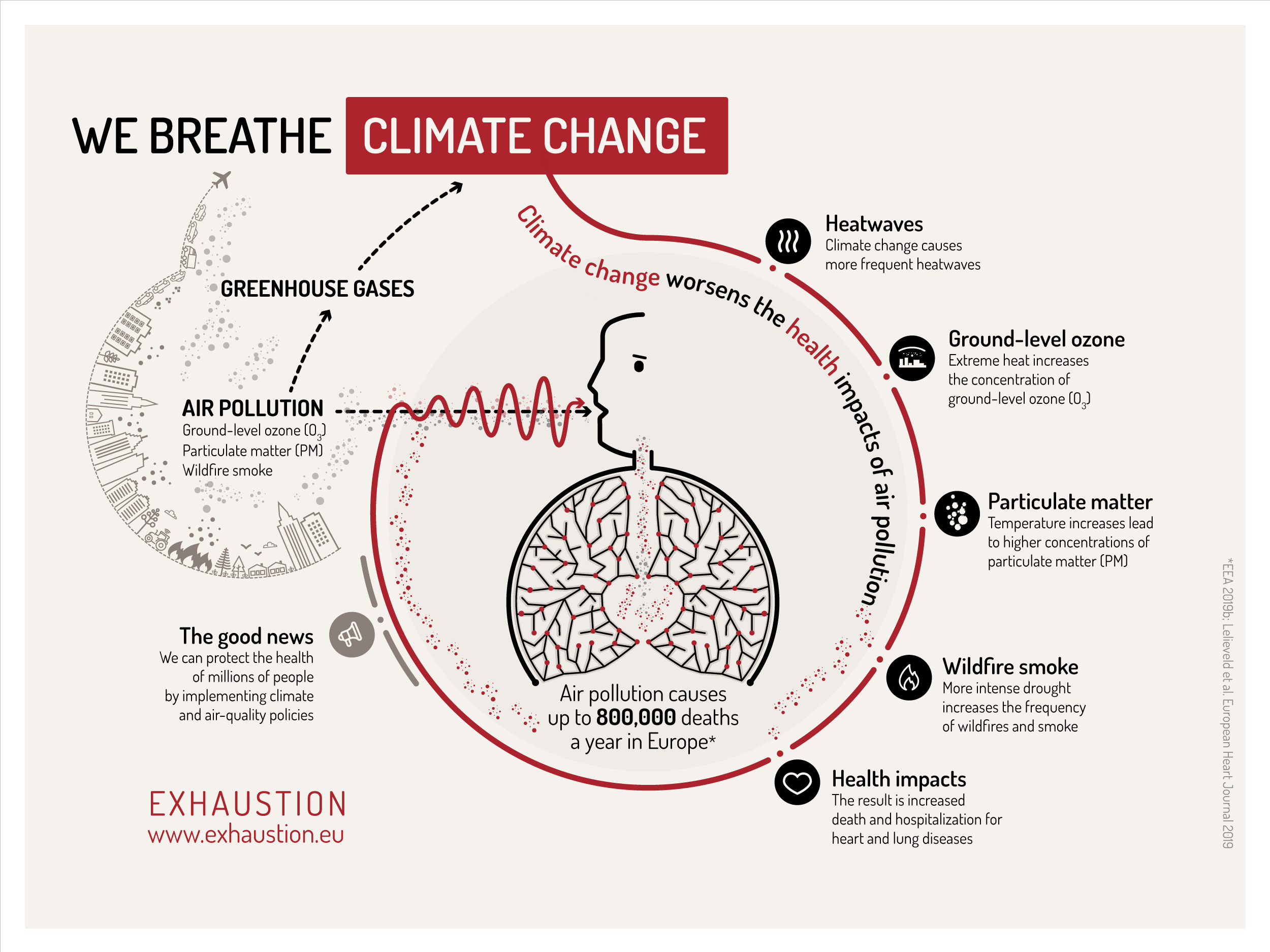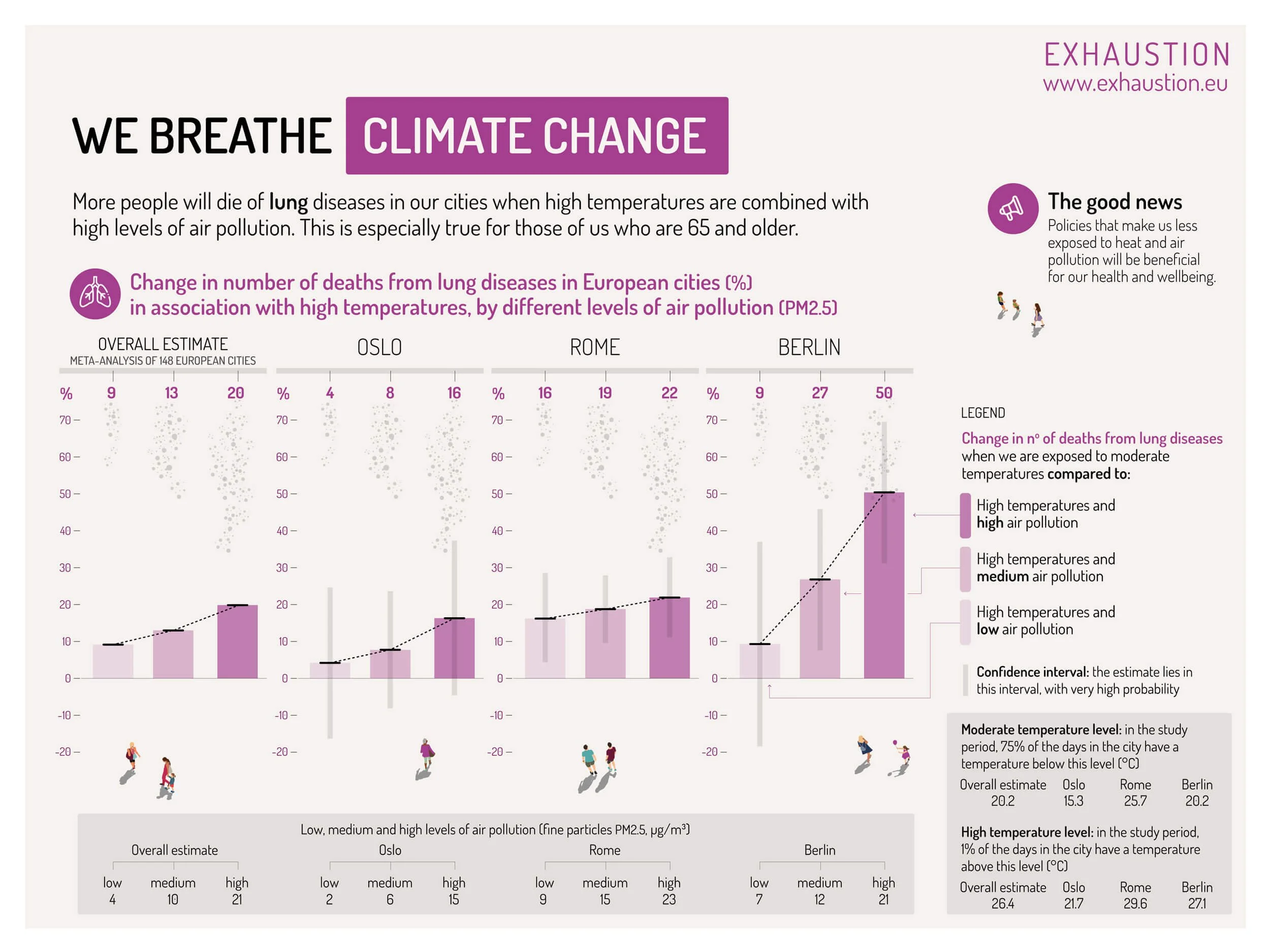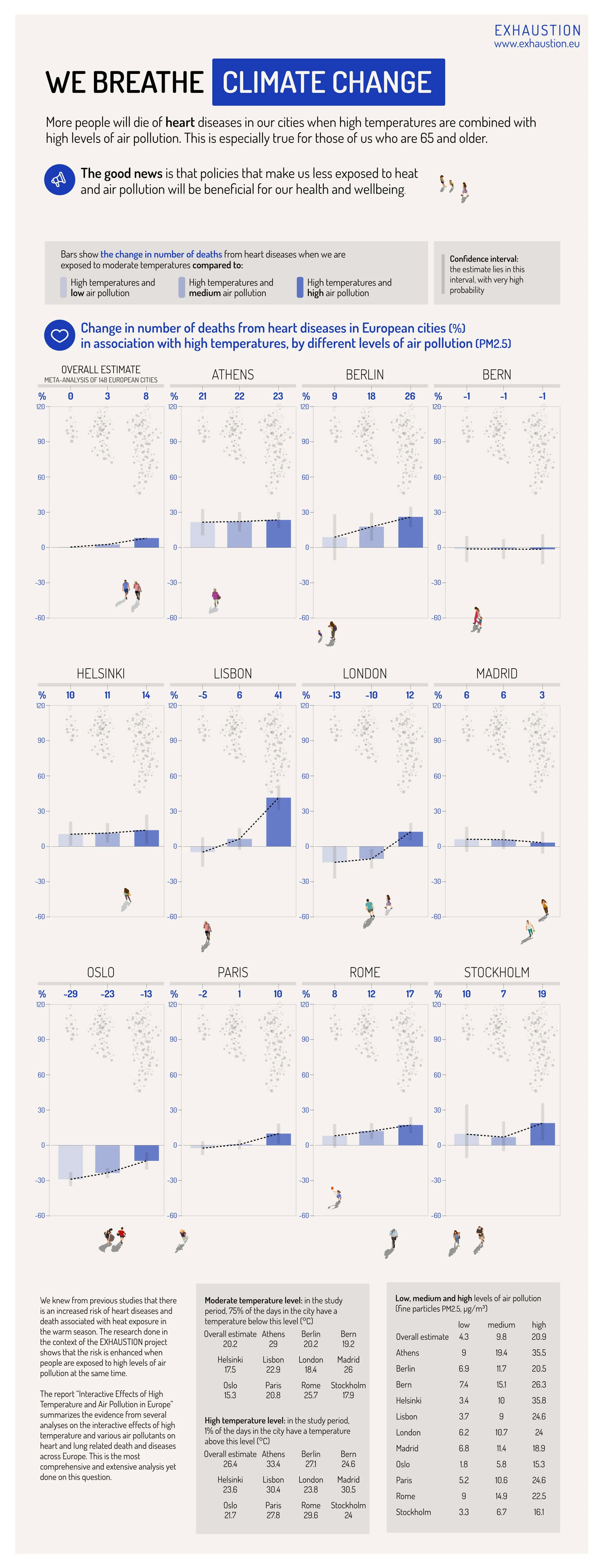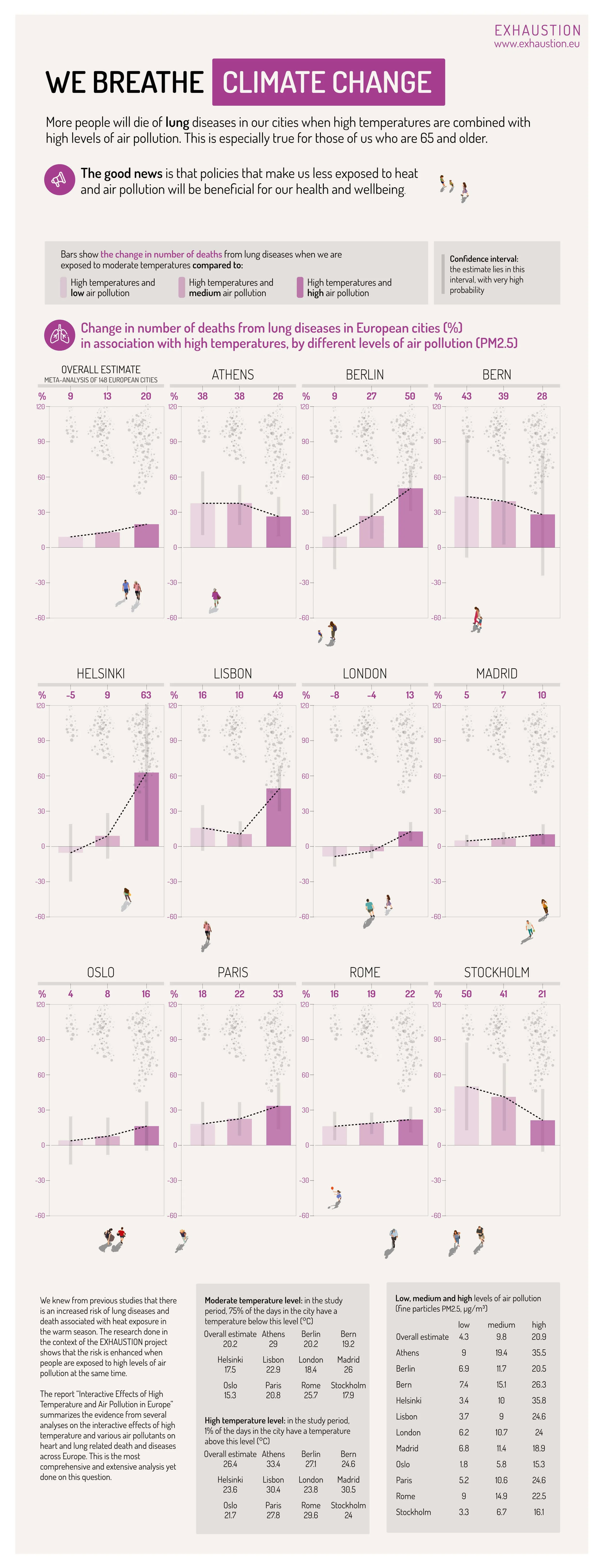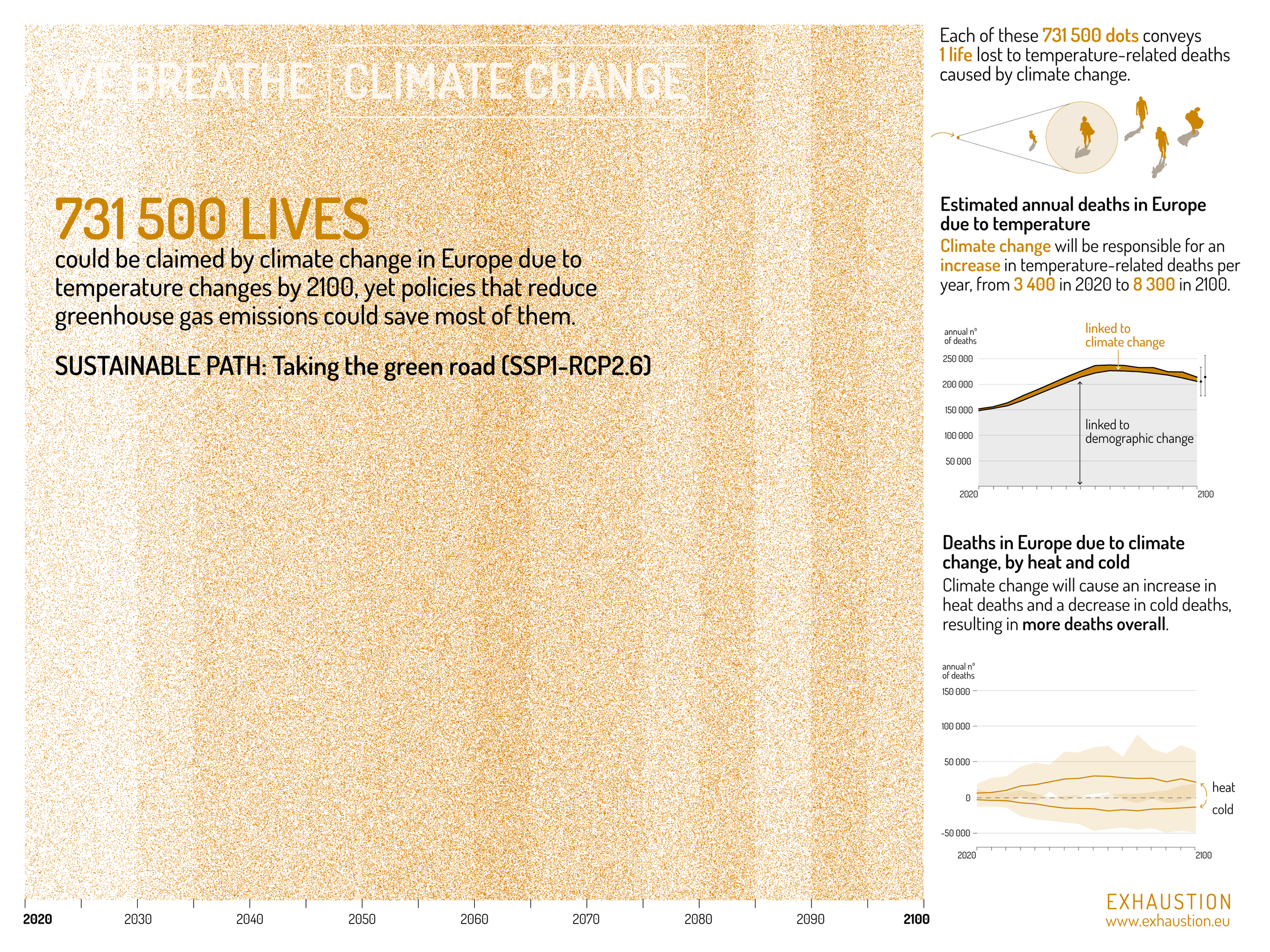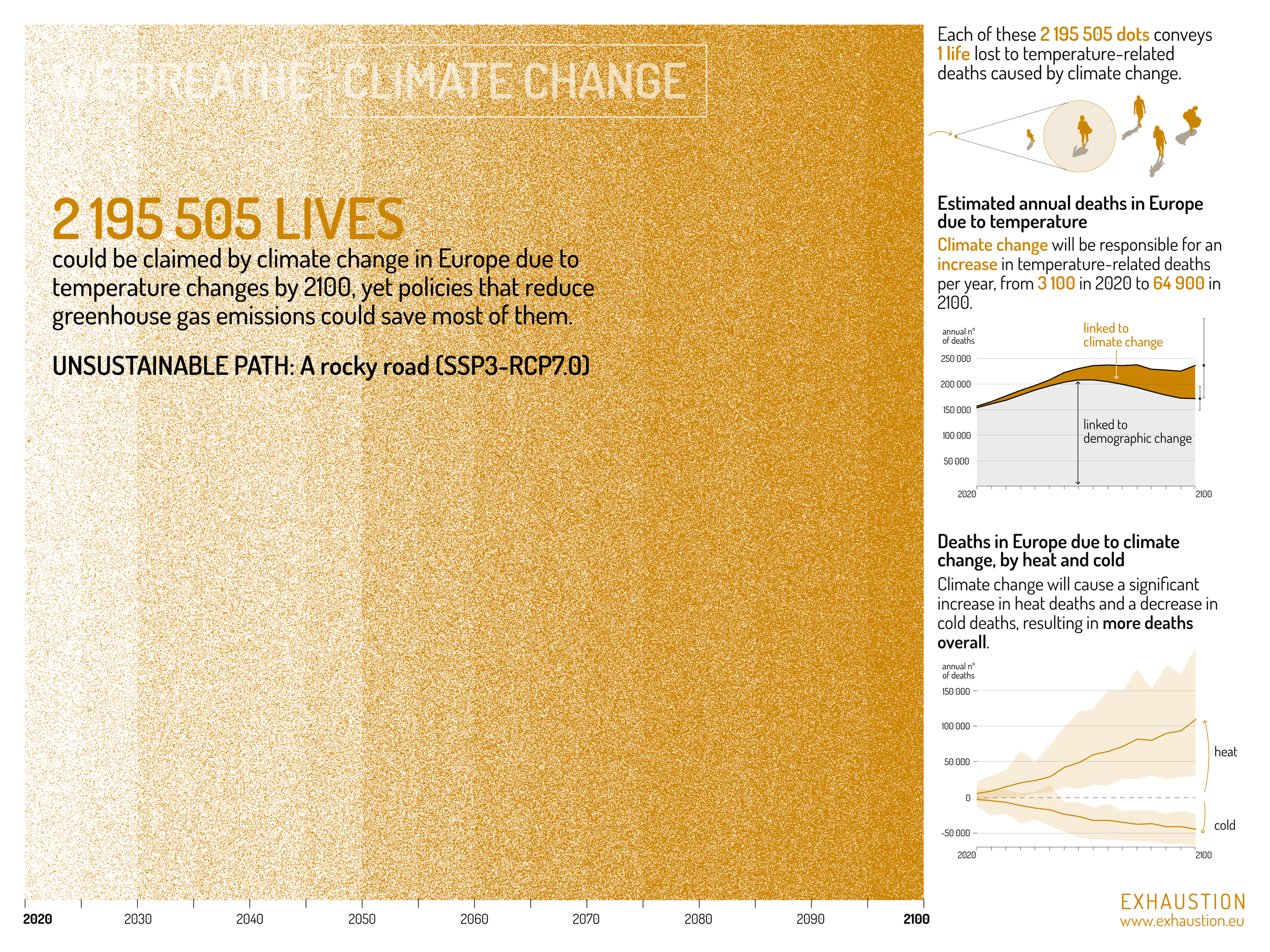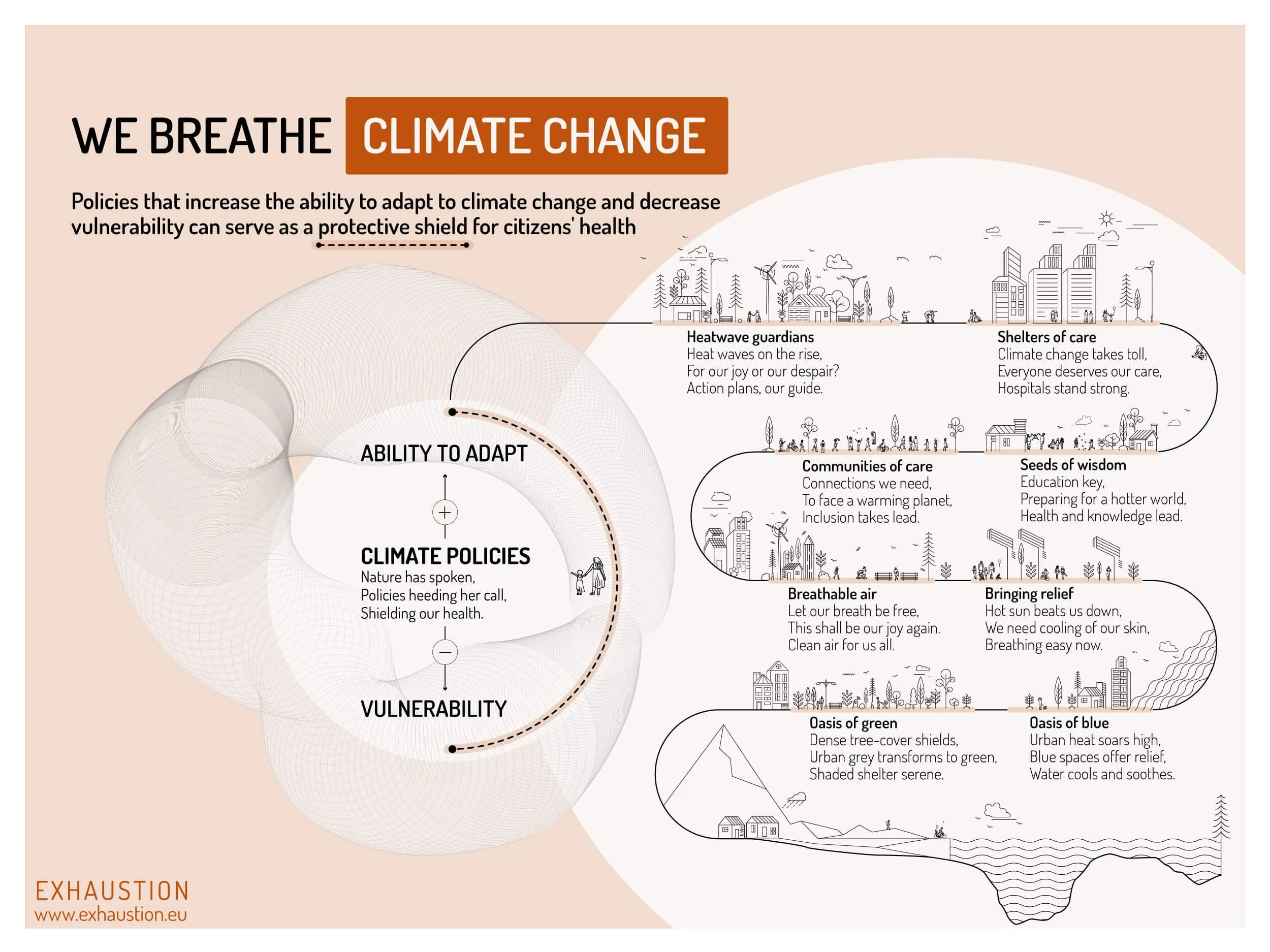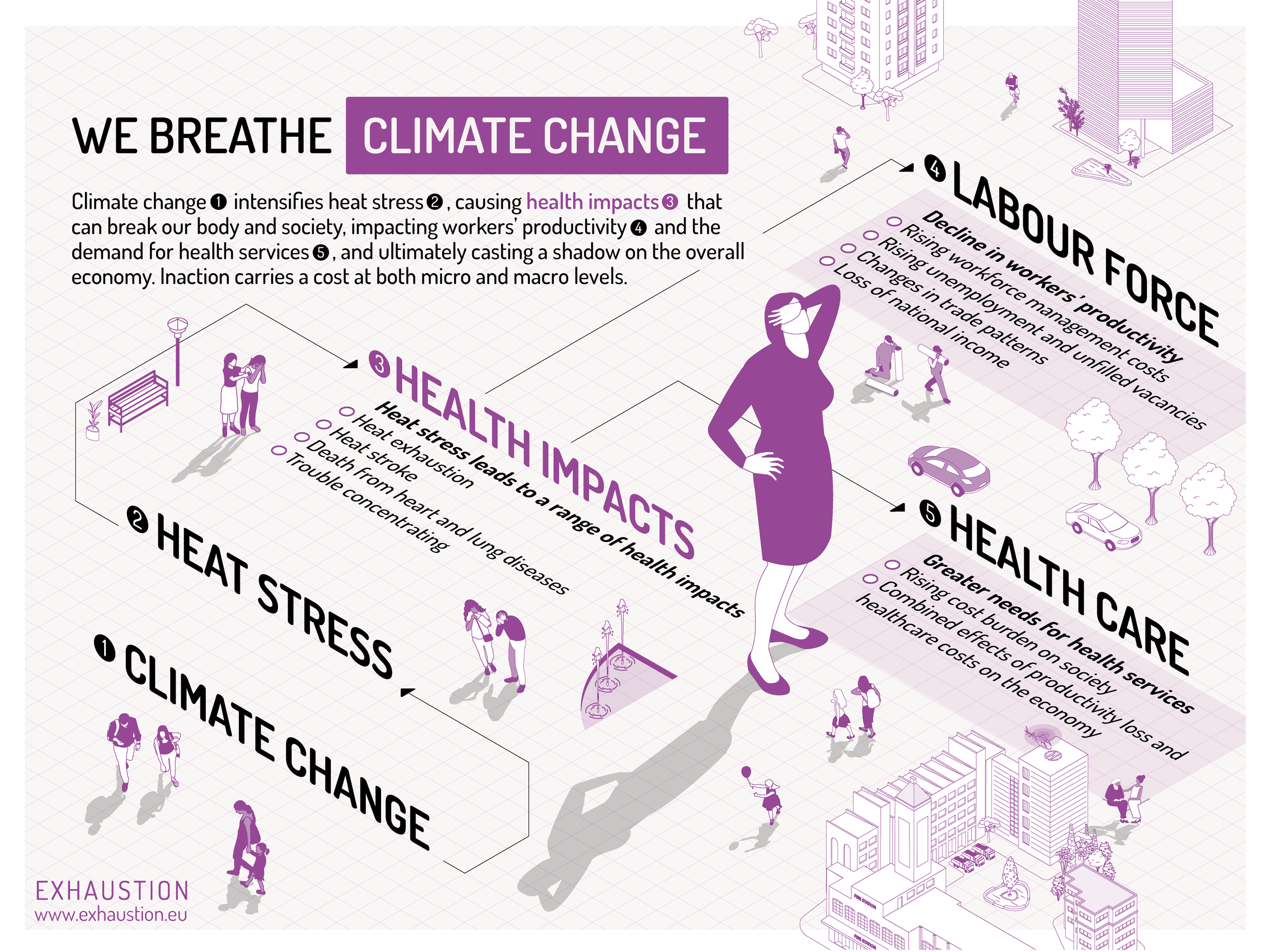The EXHAUSTION project
A four-year EU research project whose goal is to find mitigation and adaptation strategies that tackle the health risks connected with increasing temperatures combined with air pollution. The focus of our work has been on co-designing a set of data visualisations that convey the most important findings of the project, as well as its full brand identity.

In collaboration with the communication team of the Centre for International Climate Change Research (CICERO), with thirteen scientific organisations and a large group of scientists, InfoDesignLab is working on two main tracks within the Dissemination, Exploitation and Communication work package of EXHAUSTION, a four-year research project focussed on the connection between climate change, health, heatwaves, and air pollution. Our mandate consisted on two main tasks: the design of the visual identity for the entire research project and the co-design of a set of signature data visualisations that can help disseminate the key findings.
The visual identity has been the very first track we worked on. Our stance is that every scientific project should approach visual identity professionally, ensuring a strong online presence. This encompasses all design elements, from typography to color, layouts to slide presentations, and from website design to the use of photography. The reason goes beyond mere elegance and beauty; it's about how the content is perceived and trusted. There is substantial evidence demonstrating how professional design can positively influence that perception.
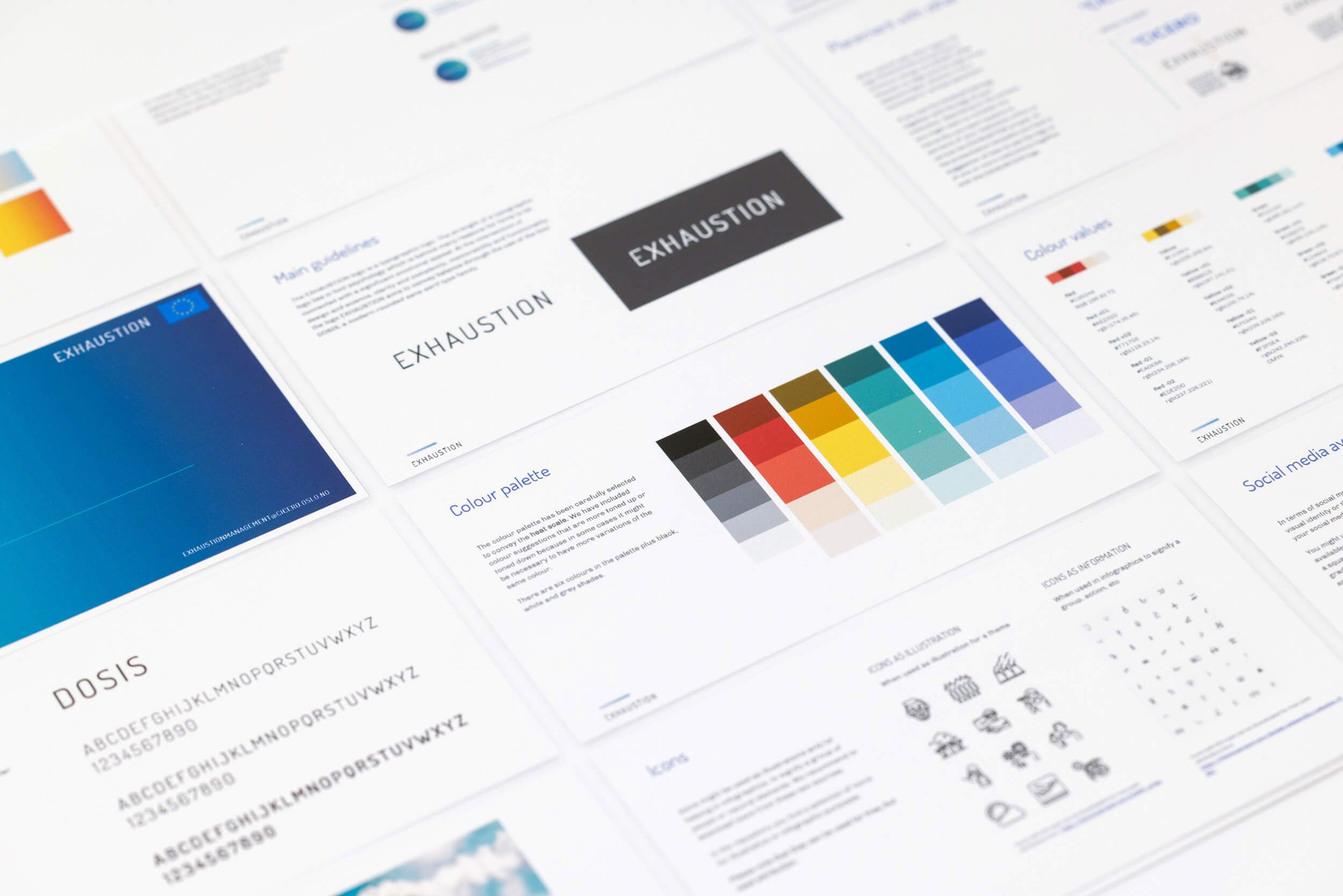
The co-design of a set of data visualisations that convey the key findings of the project is the second track we are working on. The set of visualisations will be grounded on four main pillars of the EXHAUSTION project: the context, the problem, the solution and the cost of inaction. The data are based on different deliverables and work packages.
The co-design process that we lead for each data visualisation starts with drafting a brief alongside the communication team and identifying user involvement. We plan to conduct a webinar to acquaint scientists with the design tools. Following this, initial materials for the visualisations is prepared, including summaries of deliverables and internal discussions on key messages. This phase involves thorough material review and in-depth research, and continues throughout the process. We then initiate design iterations organised in A B C cycles, marked by regular design meetings and work phases. Red circles (image below) within this process indicate user engagement points, like in-depth interviews, user testing, and follow-up conversations, ensuring minimal assumptions about our users and encouraging stakeholder participation in the design process.
We Breathe Climate Change is the theme that connects the data-visualisations packages. We identified this theme after in-depth interviews and after several design iterations, in order to build the identity of the project as a whole.

First set: The context
The first package was launched in June 2020 and developed through a co-design process that lasted six months. The intent of the first visualisation is to show that climate change worsens the health impact of air pollution.
Because of human activities such as transport, agriculture and energy use, we pump pollutants (such as gases and particulate matter) and greenhouse gases (such as carbon dioxide, methane and nitrous oxide) into the air.
On one hand these emissions build up in the atmosphere causing climate change acting much like a blanket trapping heat, on the other hand they pollute the air we breathe, making air pollution the single largest environmental health risk in Europe. Air pollution causes up to 800,000 deaths a year in Europe and 8.8 million worldwide*.
The problem is that climate change worsens the HEALTH impacts of air pollution. Climate change leads to more frequent heat waves and to increasing temperatures, posing a health risk to human health due to heat stress.
Climate change also causes changes in air pollution which amplify the health impacts of air pollution through increased deaths rates and hospitalization, particularly for cardiovascular and respiratory conditions. The good news is that we can protect the health of millions of people by implementing climate and air-quality policies.
The visualisation has been translated in several languages and launched on social media with a short animation.

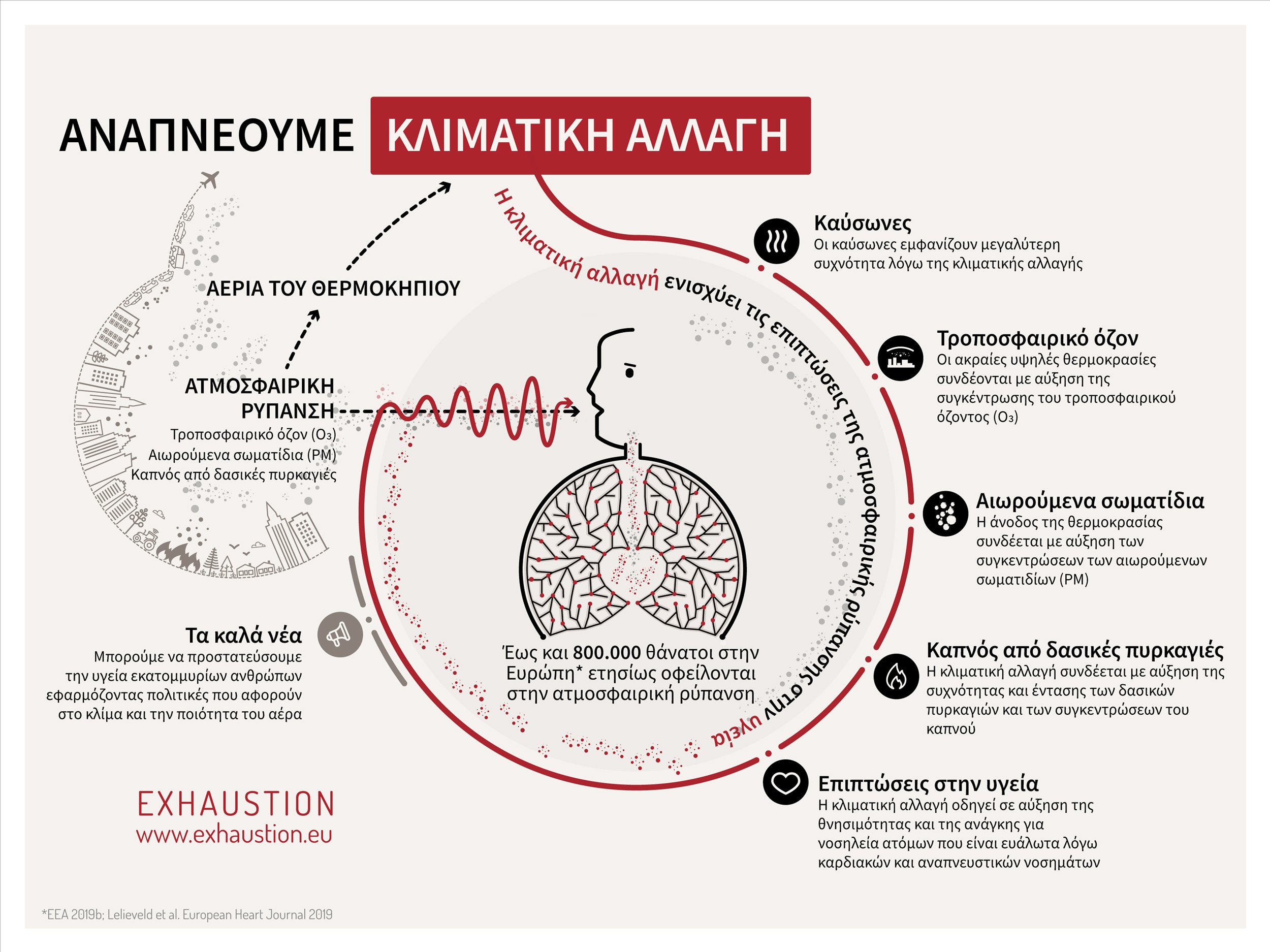
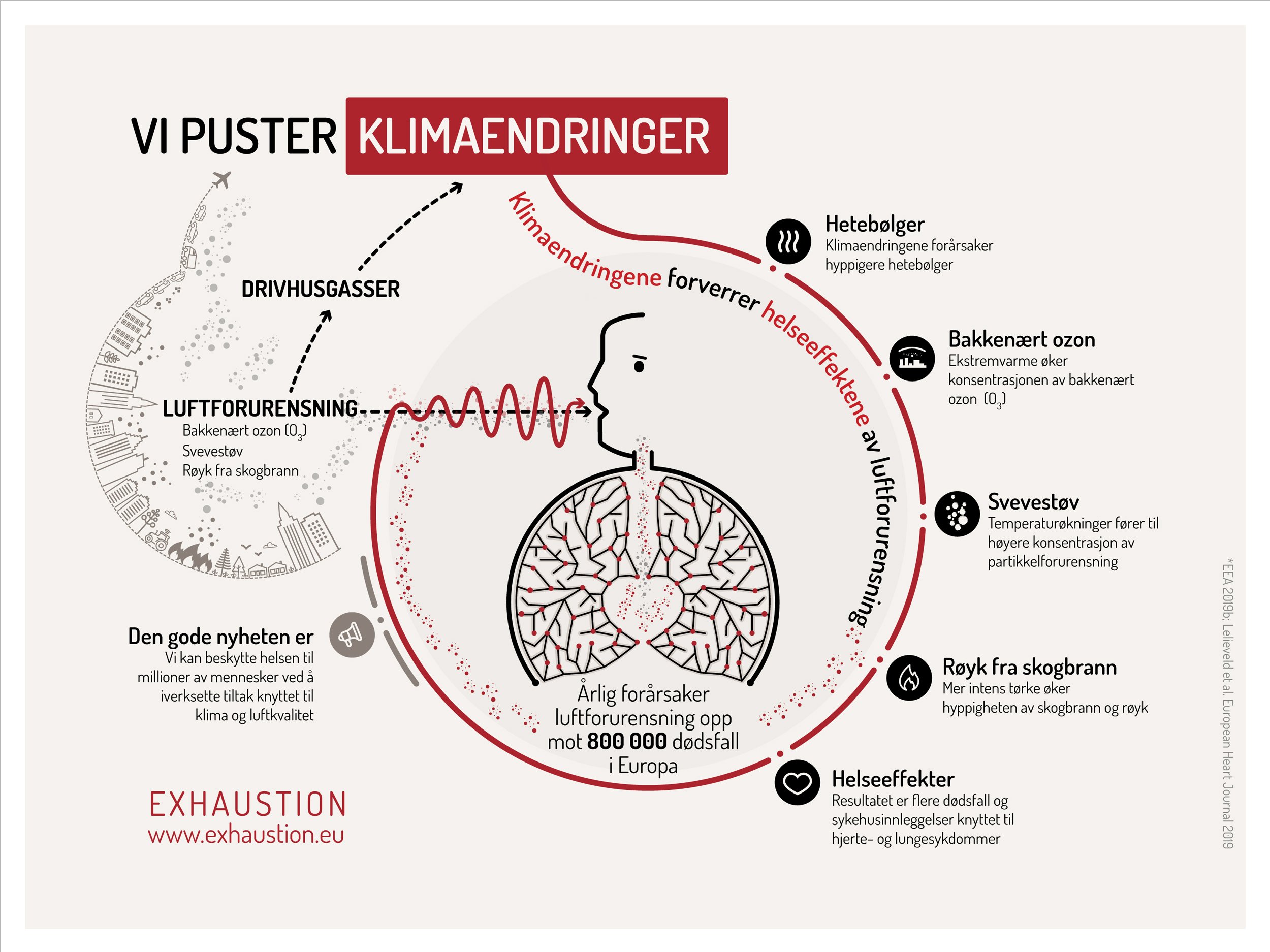
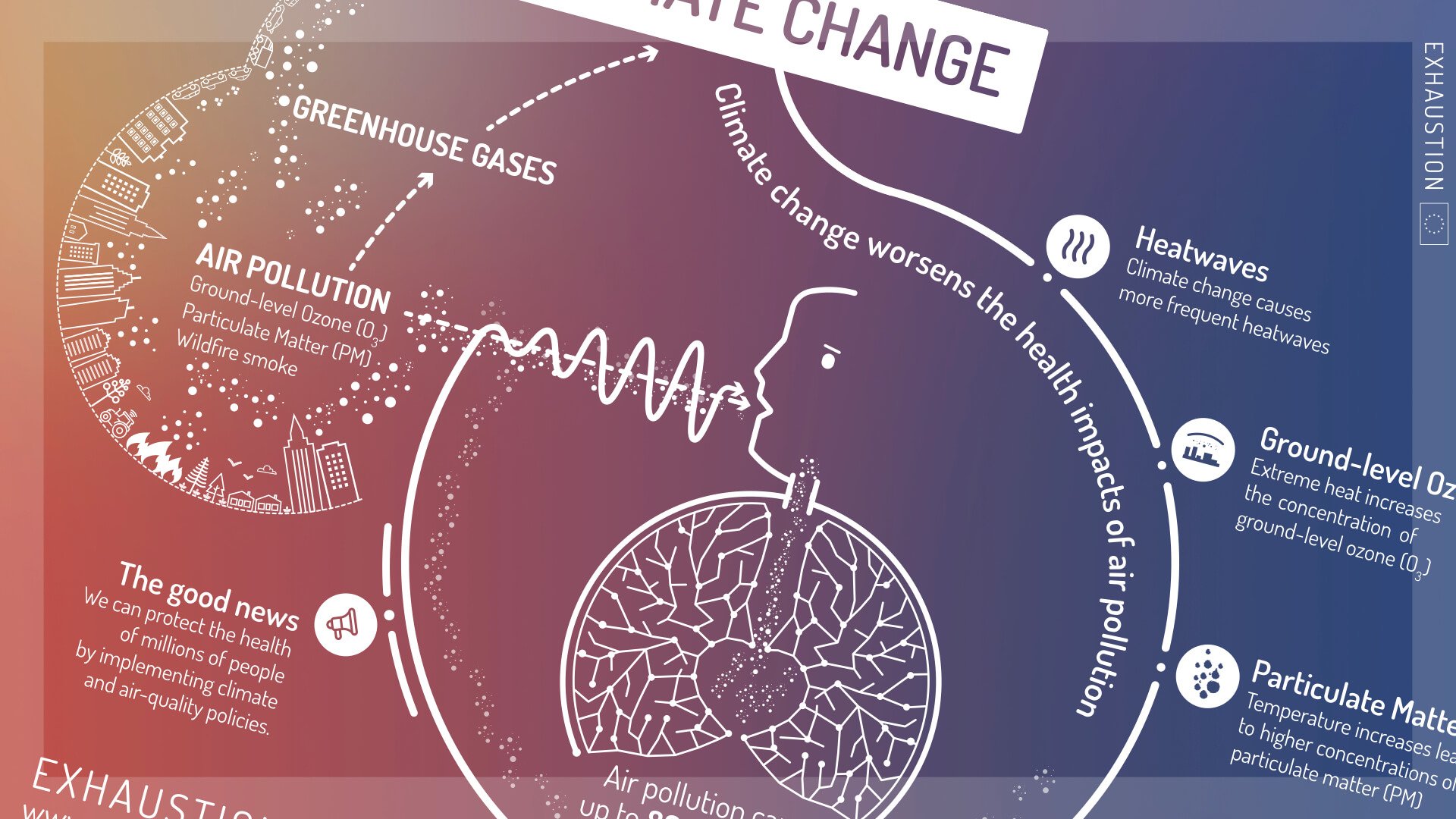
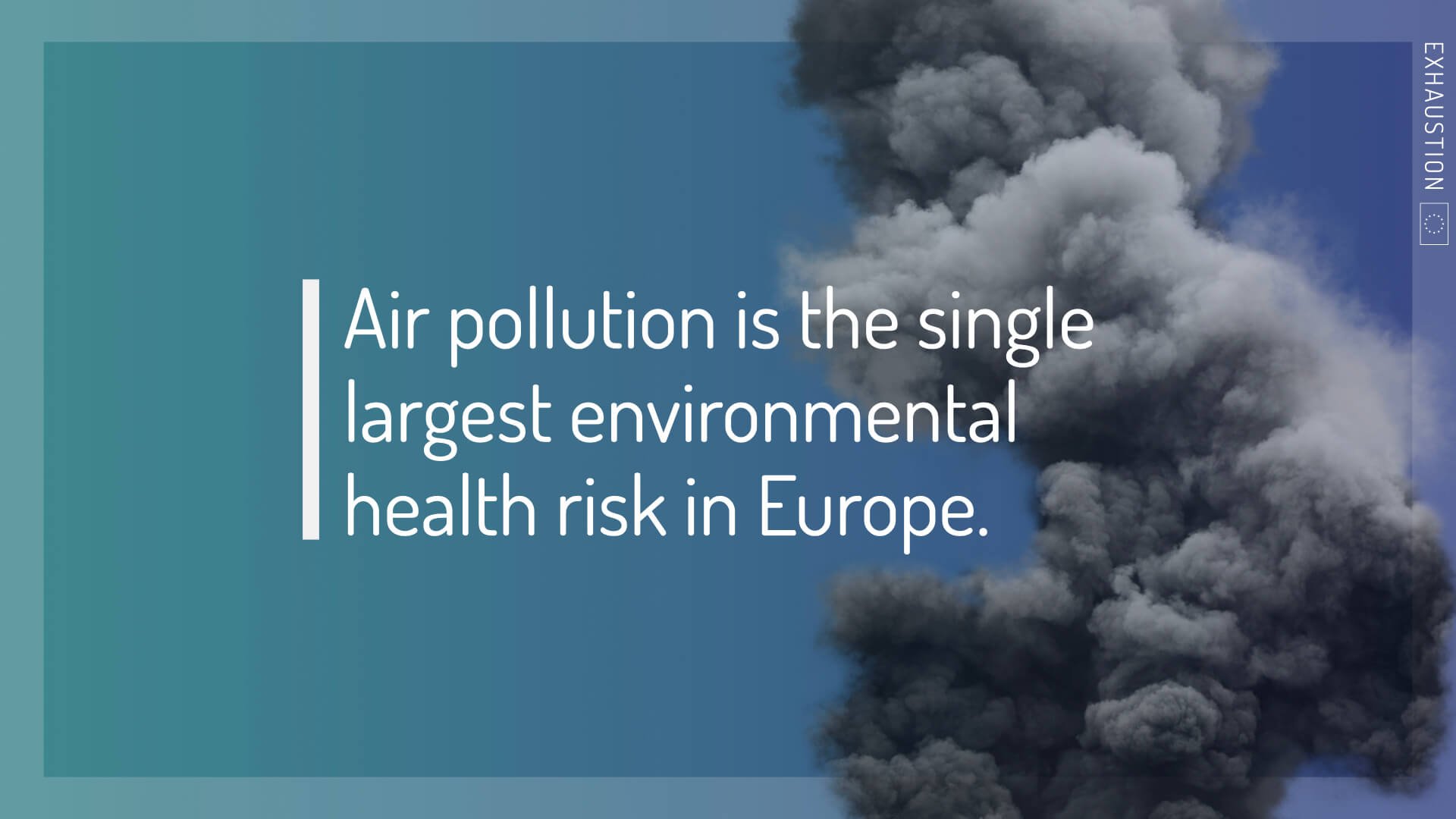
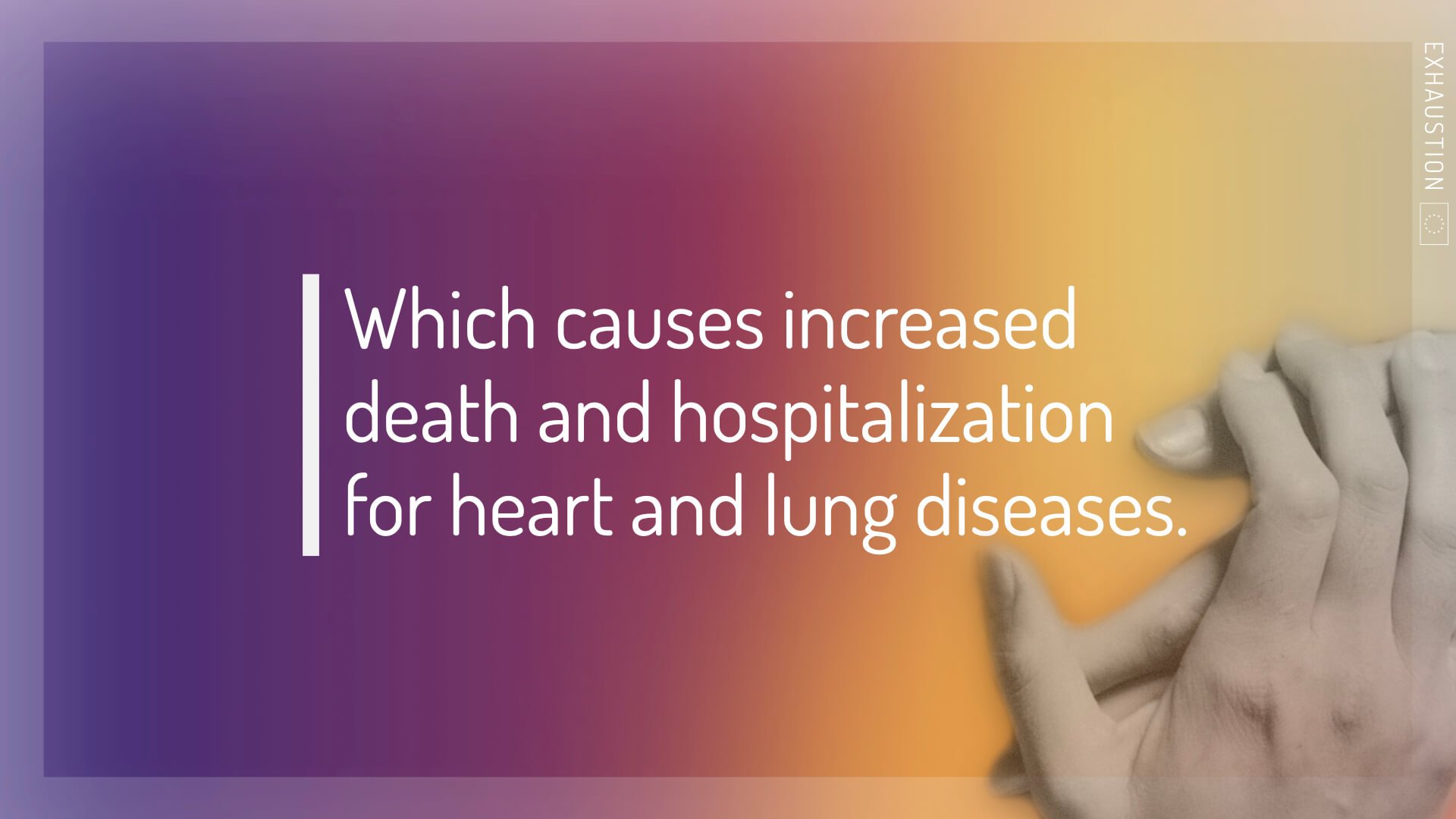
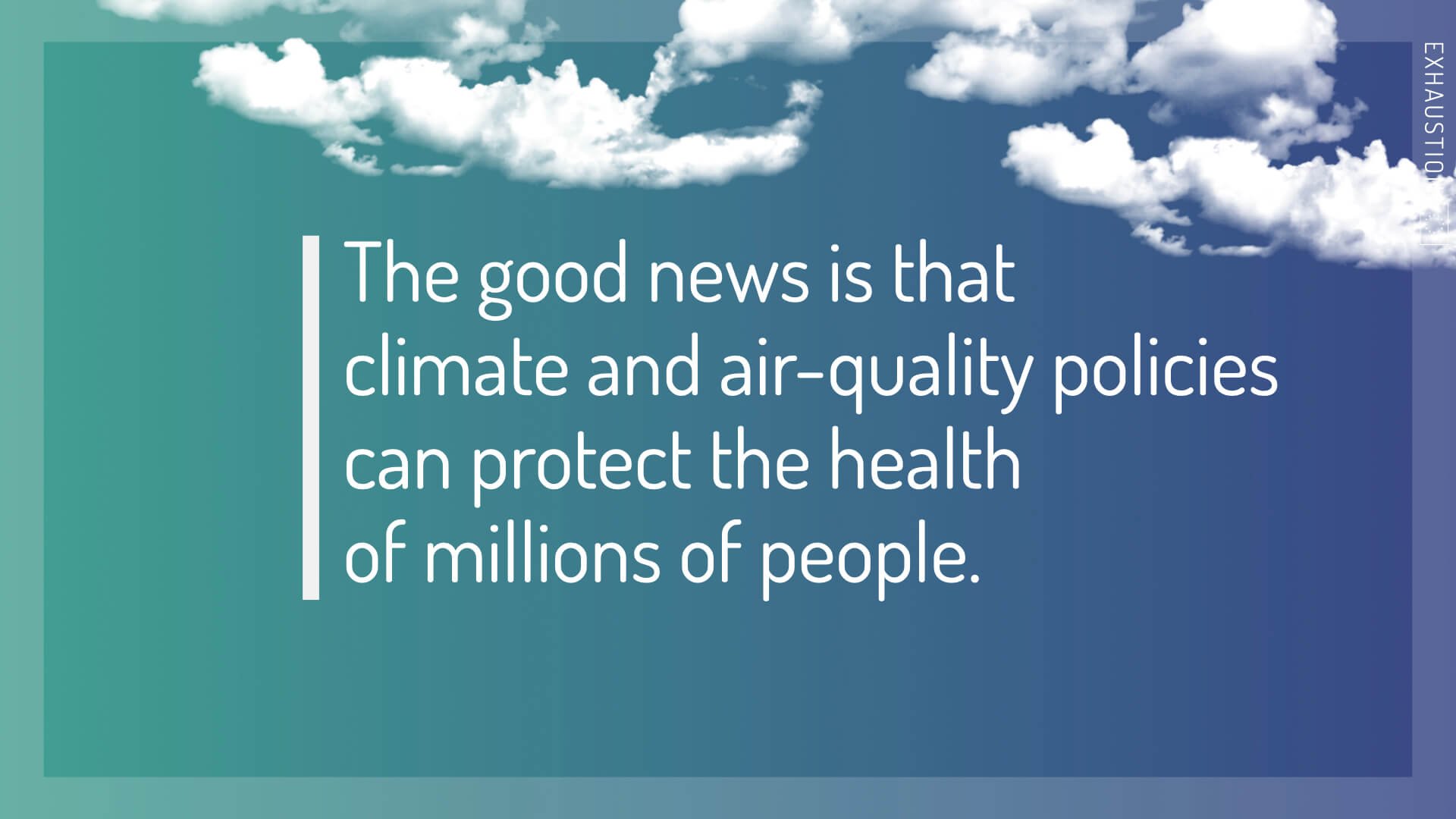
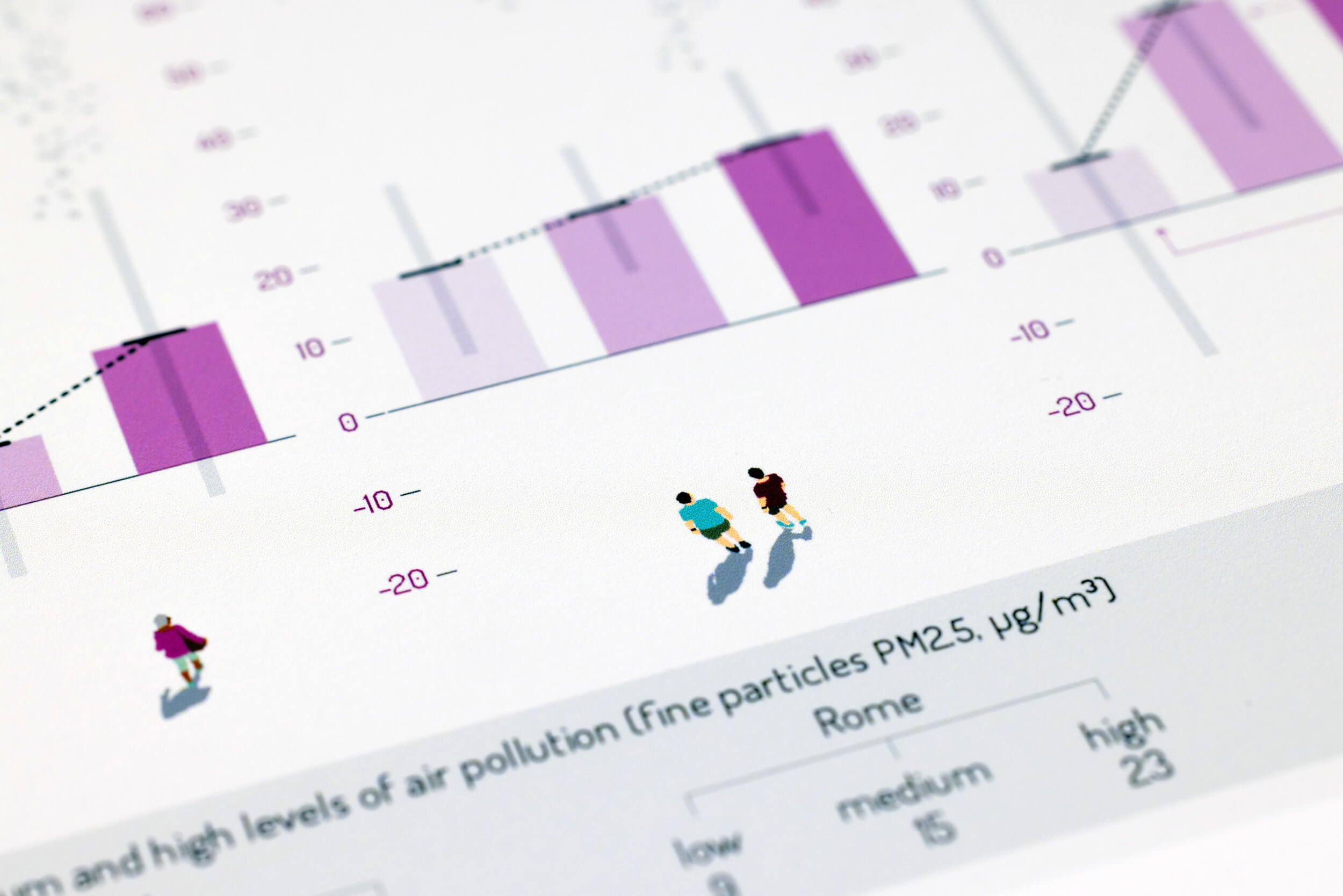
Second set: The size of the problem
The second package has been launched in summer 2022 and its intent is to focus on the health impacts of the interaction between heat and air pollution. The intent is to show that more people will die of heart diseases in our cities when high temperatures are combined with high levels of air pollution. This is especially true for those of us who are 65 and older.
There is an increased risk of heart, respiratory diseases and death due to heat. The risk is enhanced when we are exposed to heat and high levels of air pollution at the same time.


Third set: The solution and the future
The intent of the third package is to shift the attention towards the future and the solutions, with a special focus on mitigation and adaptation.
Mitigation: The goal is to convey that by the end of the century climate change may have claimed over 2 million lives in European cities, but policies that reduce greenhouse gas emissions could save most of them. Europe, as a collective of diverse nations, faces a formidable adversary in climate change. The heat-related death toll is set to rise significantly if we do not commit to robust mitigation and adaptation strategies. The path ahead is clear—moving forward without strong environmental policies will lead to greater inequality and a significant loss of lives.
Heat and cold extremes are causing premature deaths in cities across Europe and climate change is expected to impact the health burden due to temperature changes. As the planet warms, the number of deaths due to cold weather is expected to decrease. This is because, with climate change, winters are becoming milder, reducing the risks associated with extreme cold. However, this seemingly positive change comes with a significant downside. The research by the EXHAUSTION consortium shows that the decrease in the number of deaths due to cold weather will be largely offset by a dramatic increase of heat-related deaths. The increase in heat-related mortality is due to increasing ambient temperatures and more days of extreme heat resulting from a warming climate. In summary, while fewer people might die from cold conditions in the future, this benefit is overshadowed by the growing threat of extreme heat.

Adaptation: The goal is to convey that policies that reduce our vulnerability to climate change and increase the ability to mitigate and adapt can serve as a protective shield for citizens' health. The design unfolded around two layers: the use poetry in haiku style and the use of three dimensional shapes to convey a dynamic idea of transformation on a static page. An haiku is a traditional form of Japanese poetry consisting of three lines. The first and last lines contain 5 syllables each, while the middle line contains 7 syllables. Haikus often evoke a feeling of nature or a particular season and are typically focused on a single image or observation.
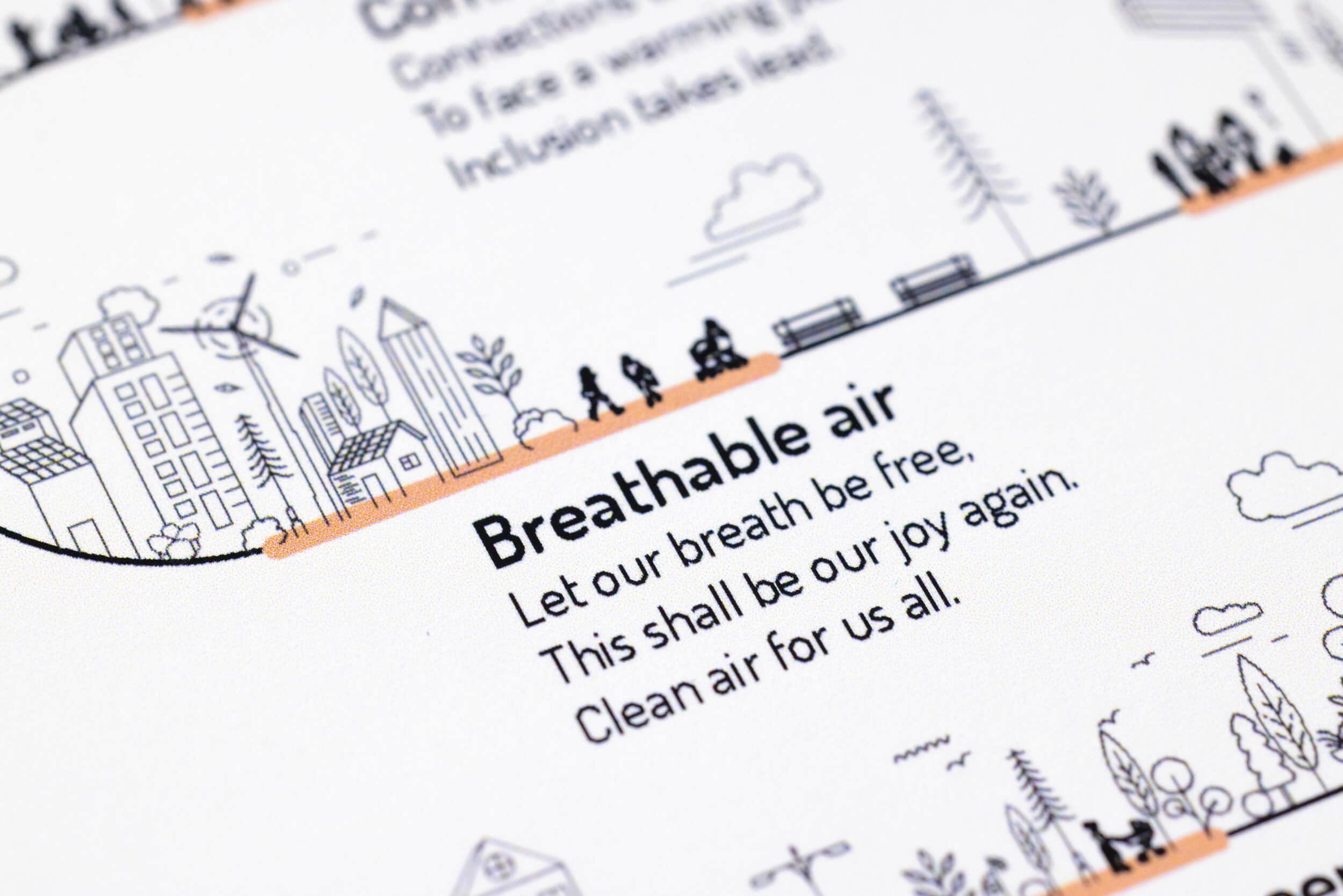
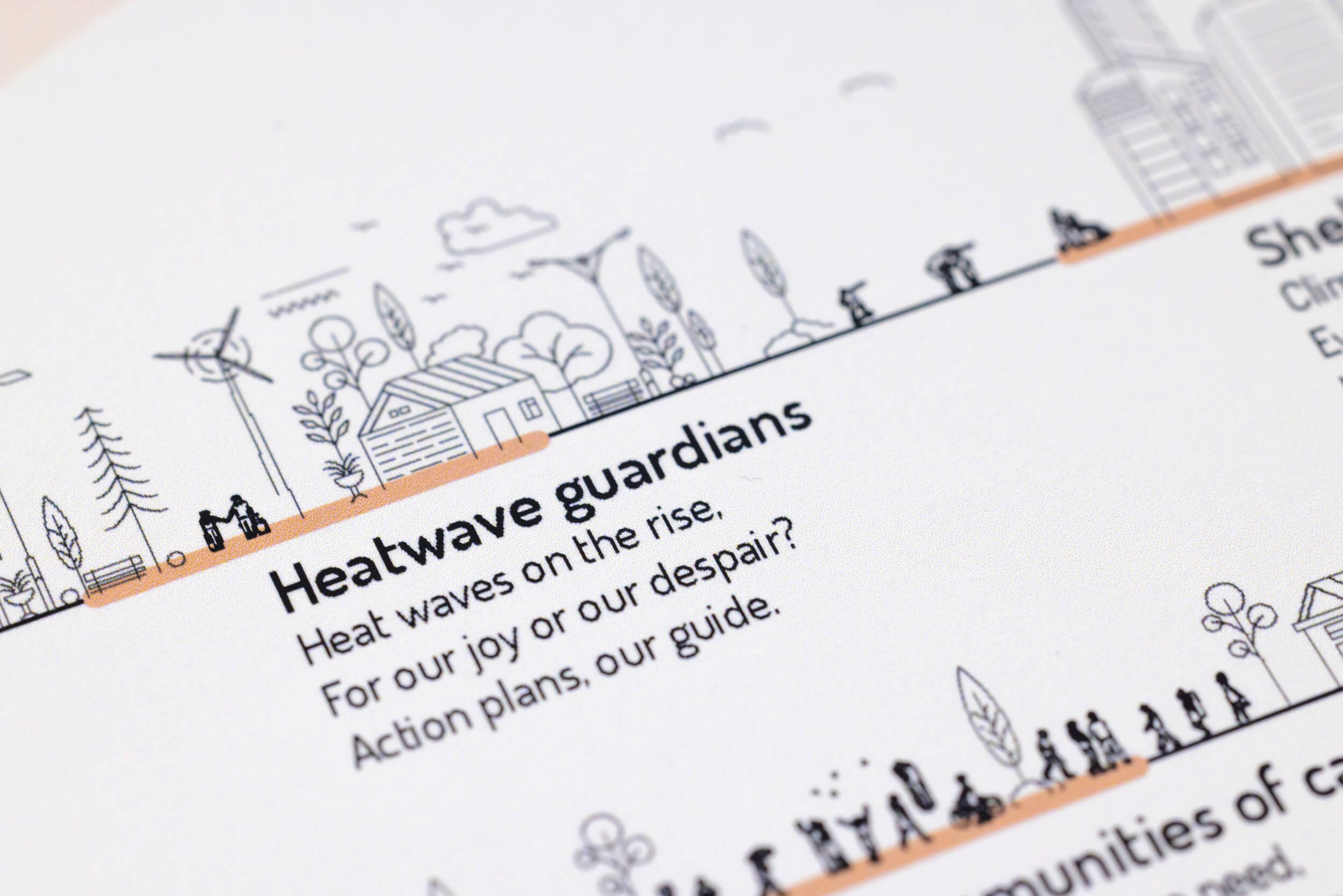
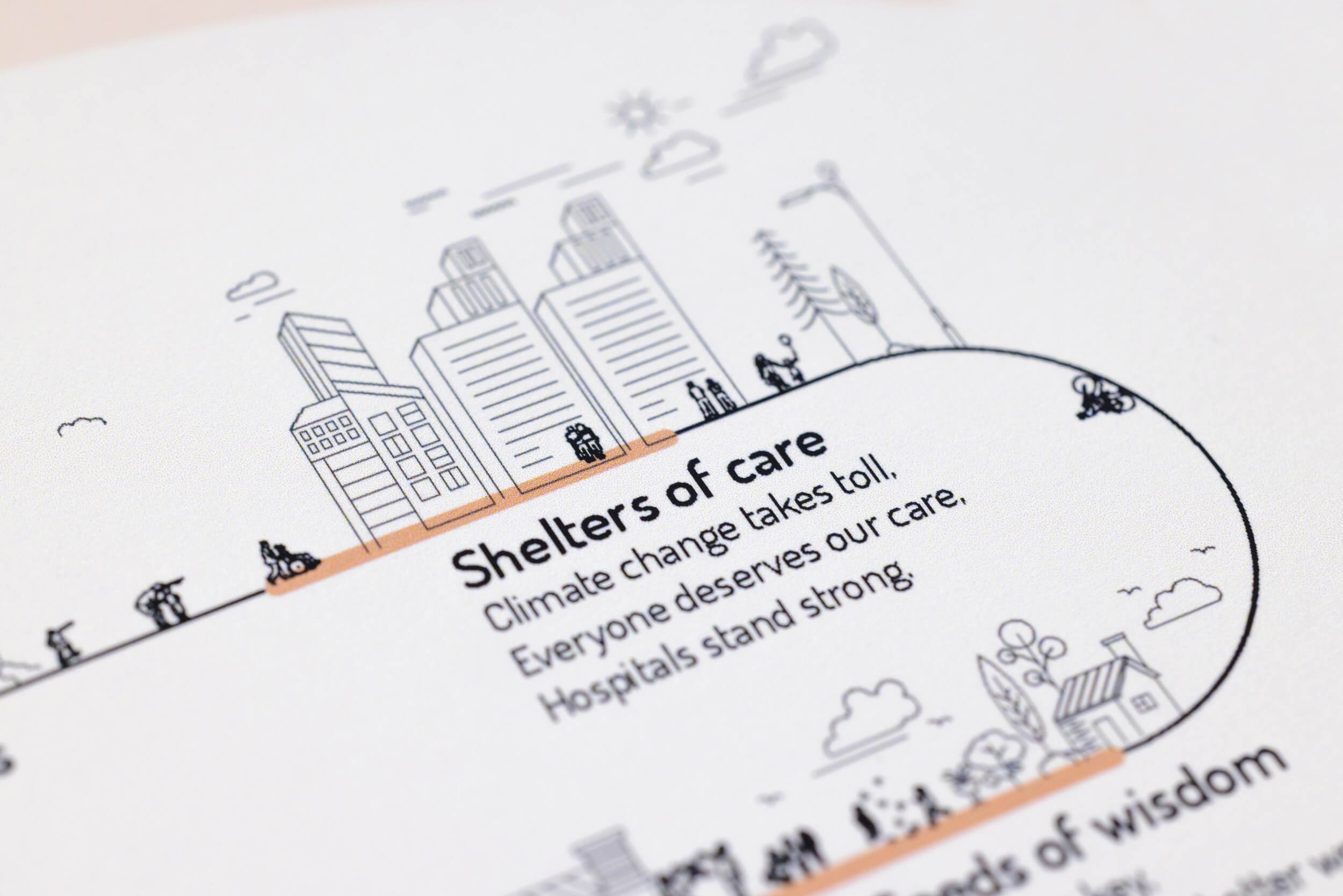
Fourth set: The cost of inaction
Climate change connects all aspects of the environment, everywhere, and no individual, no community and no country can escape it.
Because of heat stress, climate change affects the health of human beings and their work productivity when they are exposed to high temperatures. The effects on the individuals ripple through different paths, ultimately influencing the overall society and economy.
What starts with our body creates, on a micro level, an individual reaction that impacts our health risk. The ripples from the micro level amplify on a macro level, because our health, as citizens and as workers, deteriorates, therefore employers, companies, the healthcare system will need to adjust and deal with the consequences.
When the effects at the micro level become significant, they will spur structural changes throughout the economy at a macro level and economies slow down. From the environment around us, climate change gets under the skin, into our bodies, and then back outside, into society.
